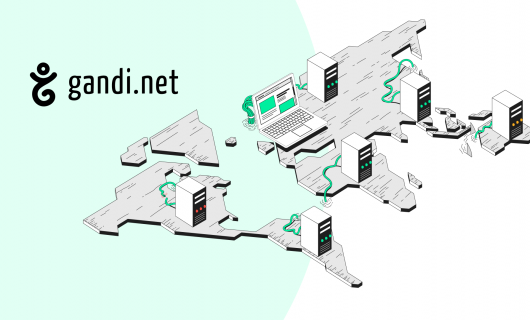Whether you’re an individual, a non-profit organization, or a business (small- or medium-sized business), being able to follow your industry or market’s news or just your area of interest quickly and easily is important. News monitoring has become absolutely essential, but the quantity of information online keeps rising exponentially. It has quickly become impossible to carry out an effective, manual news monitoring operation. That’s why in recent years, a number of tools have been introduced to help with this activity. We’ve collected a few suggestions here that we recommend for effective news monitoring.
Why do news monitoring?
Looking for news online can be a long and fastidious process if you don’t know exactly where to look and how to organize your results. Good news monitoring can help you gain back precious time, not just in looking for content, but in having the content come to you.
What do you need to read? What news should you prioritize? What sites do you look for? Who are the bloggers and content creators you like the most? It’s important to ask yourself these questions before you begin.
Implement effective news monitoring by centralizing it in a single RSS feed aggregator
RSS feed aggregators are tools make it possible for your to follow different websites’ updates in real time, and to consolidate different content into a single dashboard, with the option to sort by category. This avoids you having to visit each site one by one and subscribe to different news sources in order to effectively monitor news in a given industry or market. Among the most well known aggregators are Netvibes and Feedly, which let you subscribe to RSS feeds. This type of monitoring is effective because it’s automated: you have permanent access to the content that different websites publish on a daily basis.
FreshRSS, the open-source alternative to Feedly
FreshRSS is an RSS feed aggregator like its cousins Feedly and Netvibes. What makes it special is that it’s also open source. Your data belong to you since you host your own aggregator and don’t depend on anyone else. Here is the project’s official website: https://www.freshrss.org/.
FreshRSS can manage more than 100,000 articles without problem, and you can read your RSS feeds on your smartphone without needing to install any third-party apps. It lets you save articles to read later and create a list of favorites. FreshRSS lets you search and create filters from these searches.
You can read installation instructions in the FreshRSS documentation center.
Gandi’s PHP/MySQL web hosting solutions are perfectly suited for installing FreshRSS on a server.
Pétrolette: a new, free option for RSS feed monitoring
Released in 2021, Pétrolette is a free news reading app. It can be used immediately, without needing to create an account, with the same URL in your web browser at work as on your smartphone. The news feeds are fed by RSS feeds and are organized into tabs, which can have an infinite number of columns. Everything can be re-arranged and saved directly into your browser cache.
This software is in the same category as Netvibes or Feedly but what was especially attractive to us (and many others) was that the code is free, and there is no subscription option. Pétrolette is entirely financed by donations.
Everything is stored locally in your web browser. If you want to save your board to, for example, move it to another browser or another device, you just need to download a small file with your data and import it into your new browser. What could be better than guaranteed data privacy?
Save what you want to read later online with Pocket
Pocket (formerly Read it Later) is an app that was created in 2007 that gives you the ability to manage a list of articles read on the internet. With Pocket, you can save articles or readings to read later. Some browsers, like Mozilla Firefox, include this as a basic feature. It’s the little “pocket” button you see to the right of your address bar.
But Pocket is not a free application. The data you store there are managed by Pocket, which limits the control that you have over them.
Wallabag, the open-source alternative to Pocket
Wallabag is an application that provides the same features as Pocket: you can store any reading or article on your server and freely manage it without depending on any third parties.
Since the app is open source, you can find the code in the Wallabag Github repository.
In 2020, the web developer Armand Philippot published Wallabag installation documentation for a Gandi web hosting solution: https://www.armandphilippot.com/article/wallabag-hebergement-mutualise
Gandi’s PHP/MySQL web hosting solution is perfectly compatible with the installation of Wallabag on a server.
Other tools for effective news monitoring
Apply automatic filters on your email mailbox
Your email mailbox can be a useful tool for news monitoring when you subscribe to different newsletters. Sorting your email in structured way, you can create subfolders and set up automatic filters so that your newsletters all go into their appropriate folders. You can then check them at any time without overburdening or throwing your inbox organization out of whack.
Gandi’s email services include server-side filters, real-time synchronization, webmail, anti-spam protection, and more. Read about how to create filters for incoming messages using SOGo webmail in our documentation.
Gandi manages more than 720,000 email addresses, so why not yours?
Use social media for news monitoring
Social media are also a solid secondary tool for effective news monitoring. Twitter and LinkedIn, for example, help you keep informed in real time (most often) and follow updates on a specific topic. In conjunction with the tools mentined above, social media can be very useful for staying up to date with a particular field. Here, we’ll take a look at some of the important steps to take to use Twitter and LinkedIn for this purpose.
Twitter: create lists to manage your feed
Twitter has existed since 2006. The basic idea behind it is that you can subscribe to different accounts, whose publications (tweets) appear in your feed. But once you sign up to a certain critical mass of accounts, your information feed becomes difficult to manage. That’s where lists can be useful for more effective news monitoring. This enables you to “sort” the accounts you’re subscribed to and arrange them in lists that you manage and name as you like.
Lists can either be public or private, which is to say that you choose to dispay them or not to your own subscribers.
LinkedIn: read news directly shared/produced by your peers
LinkedIn has existed since 2002. It’s primary purpose has been to put those hiring for jobs in touch with potential job candidates. Today, the function of this network has grown to include sharing of professional information. The network search engine lets you:
- “connect” to people (network), using a request that has to be accepted by the recipient
- “follow” pages (professional interest), without the need to validate. These pages can be institutions, brands, businesses, schools, associations, etc. Once you follow them, their posts will show up in your news feed
What tools do you use for news monitoring? Feel free to tell us in a comment!
Tagged in Simple Hosting



